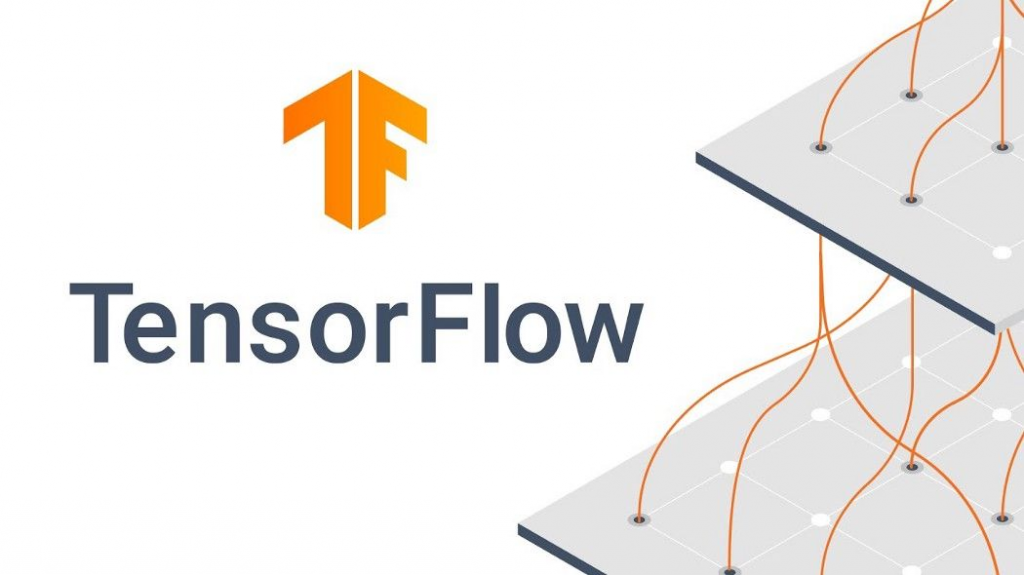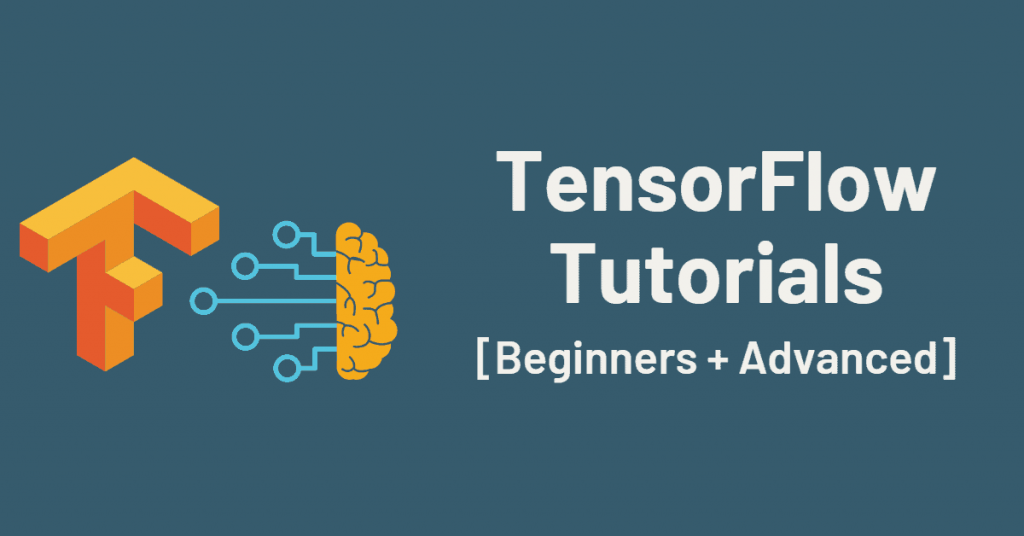What is TensorFlow?

TensorFlow is an open-source software library for numerical computation using data flow graphs. It is designed to facilitate the development and deployment of machine learning models, particularly neural networks, for various tasks such as image and speech recognition, natural language processing, and more. TensorFlow provides a flexible platform for building and training a wide range of machine learning and deep learning models.
Top 10 use cases of TensorFlow:
Here are the top 10 use cases of TensorFlow:
- Image Recognition and Classification: TensorFlow is widely used for image classification tasks, such as identifying objects in images or recognizing handwritten digits.
- Natural Language Processing (NLP): TensorFlow powers many NLP applications, including sentiment analysis, language translation, text generation, and more.
- Speech Recognition: TensorFlow can be used to build speech recognition systems, enabling applications like voice assistants and transcription services.
- Object Detection: TensorFlow supports object detection, allowing models to identify and locate multiple objects within images or video frames.
- Anomaly Detection: TensorFlow is used for anomaly detection in various domains, such as fraud detection in finance or equipment failure prediction in manufacturing.
- Recommendation Systems: TensorFlow helps in building recommendation systems that provide personalized recommendations to users based on their preferences and behavior.
- Medical Image Analysis: TensorFlow is applied to medical imaging tasks, assisting in tasks like detecting diseases in medical images (X-rays, MRIs) and identifying abnormalities.
- Autonomous Vehicles: TensorFlow is used for developing machine learning models that power the perception, decision-making, and control systems in autonomous vehicles.
- Time Series Forecasting: TensorFlow is employed for time series analysis and forecasting, predicting future values based on historical data patterns.
- Generative Models: TensorFlow is used to build generative models like Generative Adversarial Networks (GANs) and Variational Autoencoders (VAEs) for tasks like image generation and style transfer.
- Reinforcement Learning: TensorFlow supports the development of reinforcement learning algorithms used in training models to make decisions based on trial and error.
- Quantum Machine Learning: TensorFlow Quantum extends TensorFlow’s capabilities to quantum machine learning, enabling the development of algorithms for quantum computing environments.
These use cases highlight TensorFlow’s versatility and impact across a wide range of industries and applications. TensorFlow’s flexible architecture, extensive library of pre-built models, and active community contribute to its popularity in the machine learning and artificial intelligence fields.
What are the feature of TensorFlow?

TensorFlow is a powerful machine learning framework that offers a variety of features to support the development, training, and deployment of machine learning models. The following are the key features of TensorFlow:
- Flexibility: TensorFlow provides a flexible platform for building various types of machine learning models, from simple linear regression to complex deep neural networks.
- Efficient Computation: TensorFlow optimizes computations by automatically distributing them across CPUs or GPUs, enabling faster training and inference.
- Tensor Operations: The framework is built around tensors, which are multi-dimensional arrays that represent data. TensorFlow provides a rich set of tensor operations for mathematical computations.
- Automatic Differentiation: TensorFlow supports automatic differentiation, crucial for training neural networks using gradient descent and other optimization algorithms.
- High-Level APIs: TensorFlow offers high-level APIs like Keras for easier model building and training, suitable for beginners and rapid prototyping.
- Customizable Low-Level APIs: For advanced users, TensorFlow provides low-level APIs that allow precise control over model architecture and optimization.
- GPU Acceleration: TensorFlow supports GPU acceleration, allowing models to be trained and evaluated faster on compatible hardware.
- Distributed Computing: TensorFlow can distribute computations across multiple devices and machines, making it suitable for training large-scale models.
- TensorBoard: TensorBoard is a visualization tool that helps users monitor and visualize the training process, model architecture, and performance metrics.
- Model Deployment: TensorFlow allows models to be exported and deployed in various environments, including cloud services, mobile devices, and edge devices.
- Transfer Learning: TensorFlow supports transfer learning, enabling users to use pre-trained models as a starting point for their own tasks.
- Custom Extensions: TensorFlow allows the creation of custom layers, loss functions, and metrics, enabling users to experiment with novel architectures.
How TensorFlow works and Architecture?

TensorFlow’s architecture is designed to support the creation, training, and deployment of machine learning models. Here’s an overview of its architecture:
- Computational Graph: In TensorFlow, computations are represented as a directed acyclic graph (DAG) called the computational graph. Nodes represent operations, and edges represent data flow in the graph.
- TensorFlow Operations (Ops): Operations are nodes in the computational graph that represent computations. These can be basic operations like addition or more complex ones like convolution.
- Tensors: Tensors are the inputs and outputs of operations, representing data in the graph. Tensors can have various ranks (number of dimensions) and data types.
- Sessions: A session is responsible for executing operations in the computational graph. It allocates resources (CPU, GPU memory) and manages their execution.
- Variables: Variables are used to update and store model parameters during training. They are maintained across session runs and can be updated using gradient descent and other optimization methods.
- Placeholders: Placeholders are used to feed actual data into the computational graph during execution. They are often used for model inputs and targets during training.
- High-Level APIs: TensorFlow provides high-level APIs like Keras for building and training models with simplified code, suitable for rapid prototyping and beginner-friendly development.
- Model Export and Deployment: Trained models can be exported in various formats and deployed in different environments, such as serving models in web applications or mobile apps.
TensorFlow’s architecture is designed to provide a flexible and scalable framework for developing a wide range of machine learning models, from small-scale experiments to large-scale production deployments.
How to Install TensorFlow?
There are a few ways to install TensorFlow. You can install it using pip, Docker, or Anaconda.
Installing TensorFlow with pip
- Make sure you have Python 3.6 or higher installed.
- Open a terminal window and navigate to the directory where you want to install TensorFlow.
- Run the following command:
pip install tensorflow
This will install the latest stable version of TensorFlow. If you want to install a specific version, you can use the -v flag. For example, to install TensorFlow version 2.13, you would run the following command:
pip install tensorflow==2.13
Installing TensorFlow with Anaconda
- Download and install Anaconda.
- Open a terminal window and navigate to the directory where you want to install TensorFlow.
- Run the following command:
conda install tensorflow
This will install the latest stable version of TensorFlow. If you want to install a specific version, you can use the -c flag to specify a channel. For example, to install TensorFlow version 2.13 from the conda-forge channel, you would run the following command:
conda install tensorflow -c conda-forge
Installing TensorFlow with Docker
- Install Docker.
- Create a Dockerfile with the following contents:
FROM tensorflow/tensorflow:latest
- Build the image:
docker build -t tensorflow .
- Run the image:
docker run -it tensorflow
This will start a Docker container with TensorFlow installed. You can then use the container to run TensorFlow code.
Once you have installed TensorFlow, you can verify the installation by running the following command:
python -c "import tensorflow as tf; print(tf.version)"
This will print the version of TensorFlow that you have installed already.
Basic Tutorials of TensorFlow: Getting Started

The following steps are the basic tutorials of TensorFlow:
- TensorFlow 2 quickstart for beginners is a great introduction to the basics of TensorFlow. It covers topics such as tensors, operations, and sessions.
- Step 1: Install TensorFlow
- You can install TensorFlow using pip:
- Step 1: Install TensorFlow
pip install tensorflow * You can also install TensorFlow using Anaconda: conda install tensorflow * **Step 2: Import TensorFlow**
* You can import it into your Python code after,once TensorFlow is installed: import tensorflow as tf * **Step 3: Create a Tensor**
* A tensor is a data structure that represents a multi-dimensional array. You can create a tensor using the `tf.constant()` function: x = tf.constant([1, 2, 3]) * This generate a tensor with the values 1, 2, and 3.
* **Step 4: Perform an Operation**
* You can perform operations on tensors using the `tf.add()` function: y = tf.add(x, 1) * This adds 1 to each element of the tensor x.
* **Step 5: Create a Session**
* A session is a runtime environment for executing TensorFlow operations. You can create a session using the `tf.Session()` function: sess = tf.Session() * **Step 6: Run the Session**
* Once you have created a session, you can run it to execute the operations that you have created: result = sess.run(y) * This will print the value 4 to the console.- TensorFlow for beginners is a more comprehensive tutorial that covers a wider range of topics, including linear regression, logistic regression, and neural networks.
- Step 1: Linear Regression
- Linear regression is a simple machine learning model that can be used to predict a continuous value from a set of features.
- Step 2: Logistic Regression
- Logistic regression is a machine learning model that can be used to predict a categorical value from a set of features.
- Step 3: Neural Networks
- Neural networks are a powerful machine learning model that can be used to solve a wide range of problems.
- Step 1: Linear Regression
- TensorFlow Playground is a great way to experiment with TensorFlow without having to write any code. You can create and visualize graphs, and see how different operations affect the output.
- Step 1: Go to the TensorFlow Playground website
- The TensorFlow Playground website is located at https://playground.tensorflow.org/
- Step 2: Create a graph
- Click on the “+” button to create a new graph.
- Step 3: Add operations
- You can add operations to the graph by clicking on the buttons in the toolbar.
- Step 4: Run the graph
- Click on the “Play” button to run the graph.
- Step 5: Visualize the output
- The output of the graph will be displayed in the graph viewer.
- Step 1: Go to the TensorFlow Playground website
- Tips on How to Become a DevOps Engineer - April 28, 2024
- Computer Programming Education Requirements – What You Need to Know - April 28, 2024
- The Role of Big Data in Higher Education - April 28, 2024

